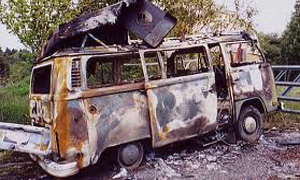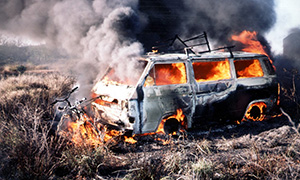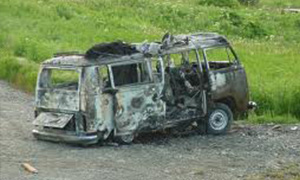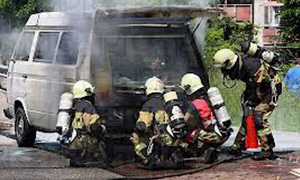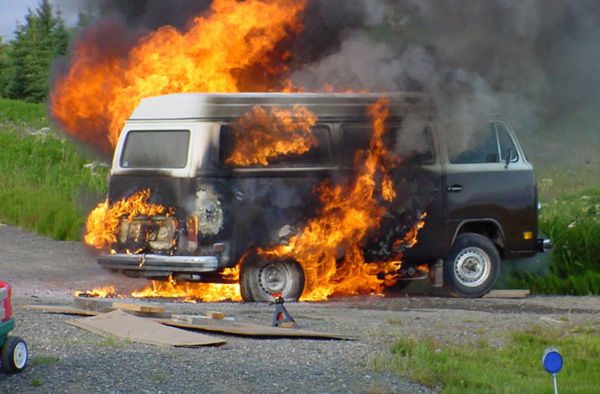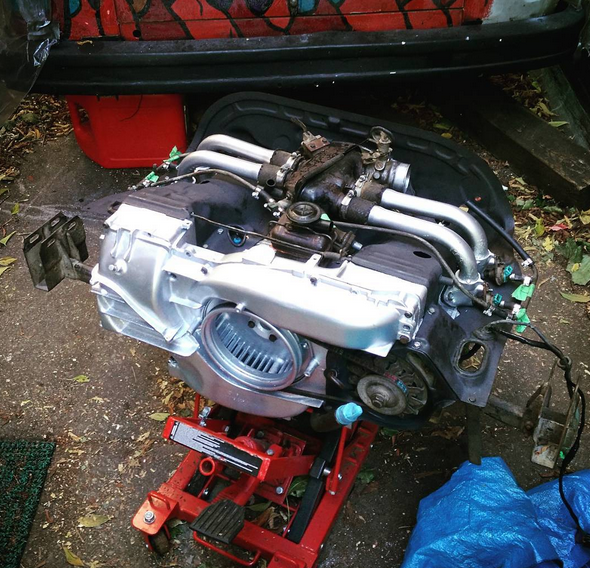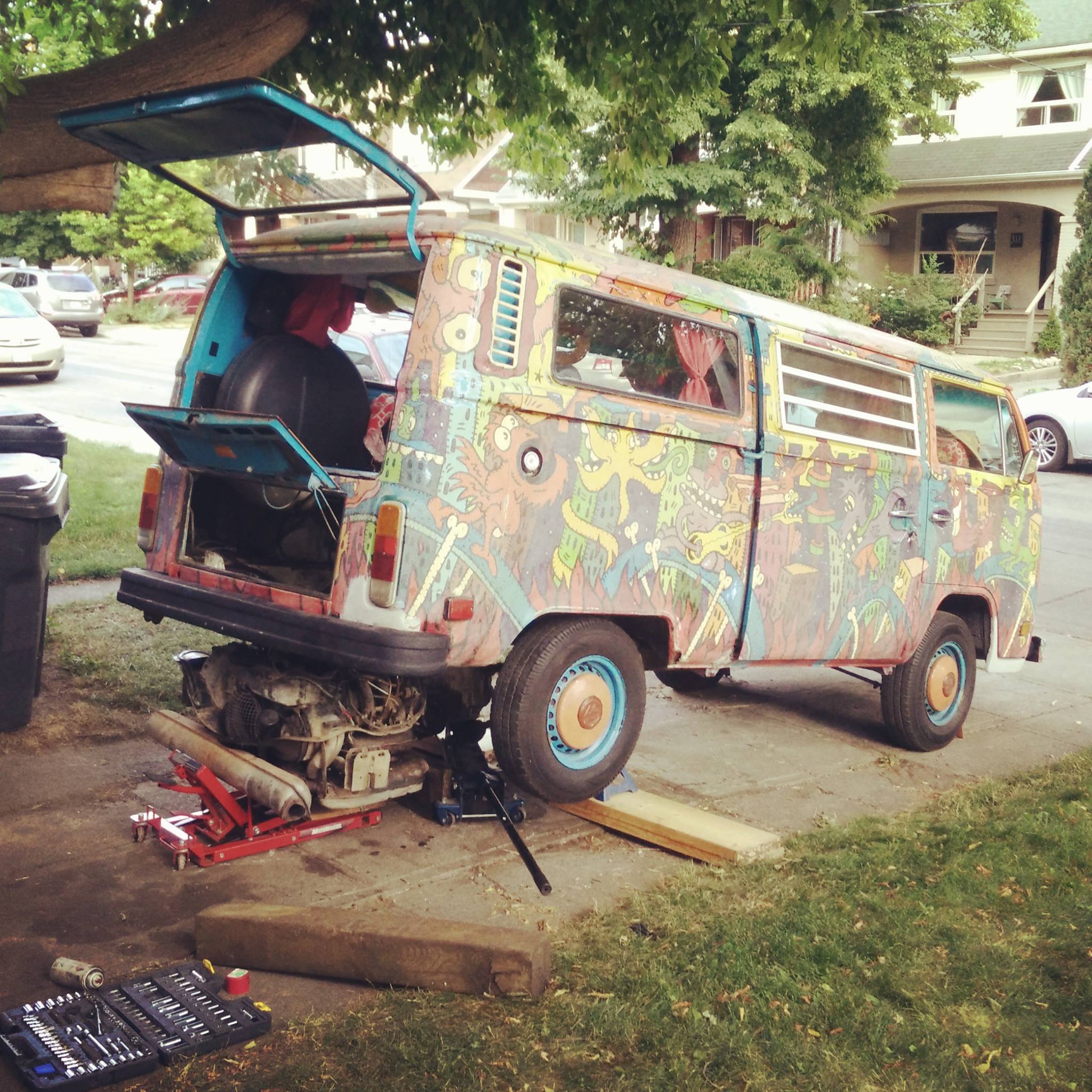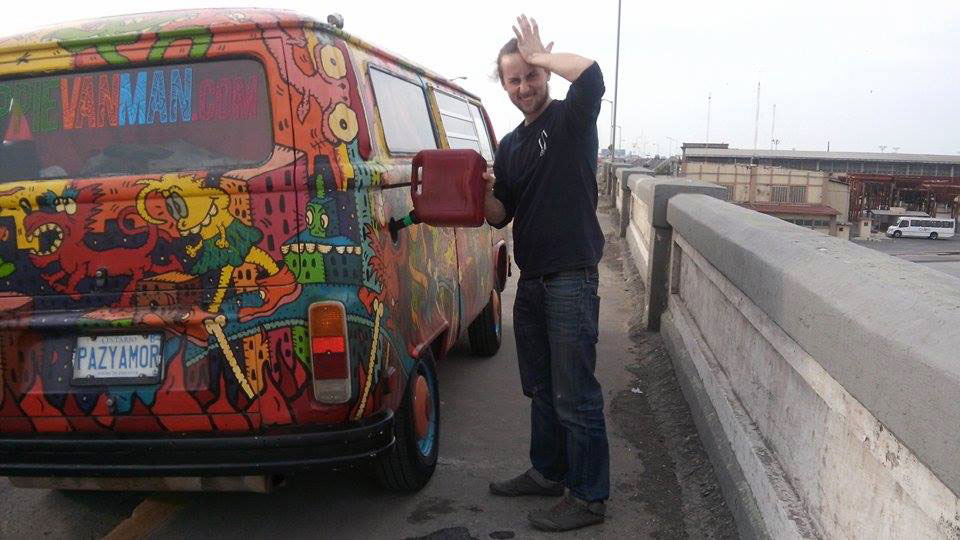One of the number one things people recommend when you purchase an old VW is to replace the fuel lines. VW used rubber fuel lines in their early models. After 30-sum-odd-years these rubber fuel lines become dried out and cracked thus making them susceptible to leaking. When you have gasoline leaking around an engine that can get over 300 degrees Celsius, fires are a great risk (and have often occurred). See the bottom of this post for a tribute to those we have lost.
Not wanting my brand new baby to go up in flames, I decided the thing to do was to replace the fuel lines. Following the instructions from an online VW Van forum, after purchasing new fuel lines from www.germansupply.com , I set out to begin changing the fuel lines my self.

I am by no means trained as a mechanic, but from a small age I had always been interested to figure out how things worked. My parents use to give me old electronics and allow me to take them apart to investigate. As I got older I began to learn various skills from wood work, to minor maintenance and repairs of household items. As soon as I was old enough to drive, I began teaching my self about mechanics and auto repair. Some of you will remember my best friend is a mechanic, so many times I would take my vehicles to him and we would work on them together, so I got to learn even more about auto maintenance from those experiences coupled with online tutorials.
Half way through the project of replacing the fuel lines I accidentally snapped the head off of not one but two bolts, which were responsible for holding the fuel injector (yes, the 1979 VW was one of the first to switch to fuel injection from carburetion) in place. This is a big problem as the fuel injector is what is responsible for shooting the fuel into the engine.
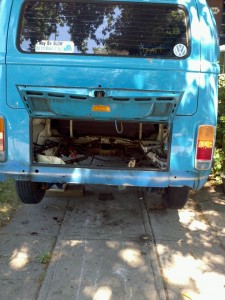
To make matters worse, the placement of this was in such a tight confined area of the engine compartment (which is in the rear of the van) that there was no way to fix it short of pulling the engine out of the vehicle. With less than two weeks until my scheduled departure to Burning Man 2011, and 3 friends counting on me for a ride, I new there was nothing left to do but get at dropping the engine out so it could be repaired. What went from being a small project turned into a massive one.
Again returning to the online forum, I got instructions on how to remove the engine. I bought a motorcycle jack to drop the engine down onto. It took me a solid 8 hours of determined work to get the engine out. It went relatively smoothly. I then pulled the engine via the motorcycle jack 6 blocks from my house to the nearest garage, so they could extract the broken screws.
Luckily after all was said and done, I was able to get the engine back in the van and ready to run by the time we were scheduled to leave. I was still installing the sound system on the day we were departing, that’s how down to the wire the project was.
[highlight color=”color”]A tribute to those who have fallen[/highlight]

